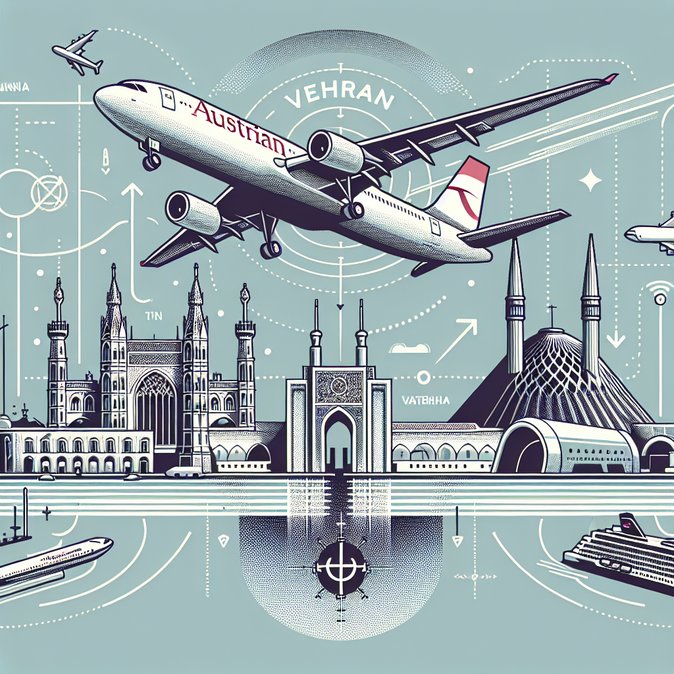
Austrian Airlines has confirmed that it will once again connect Vienna and Tehran, with the first flight (OS 871) due to depart Vienna International Airport on Monday, 3 November 2025 at 19:35 local time. The service returns after a five-month suspension that began in June, when hostilities between Iran and Israel triggered widespread security concerns across Middle-Eastern airspace and prompted the Lufthansa Group to ground flights to Iran, Tel Aviv, Amman and Erbil.
The decision to resume the four-times-weekly rotation follows a comprehensive risk assessment by Austrian Airlines’ security team in coordination with the European Union Aviation Safety Agency (EASA) and local authorities. Airline spokesperson Leonhard Stein explained that "the current security picture no longer justifies a blanket suspension; restoring the Vienna–Tehran link is in the interest of business travellers, relatives and the sizeable Iranian diaspora in Austria." The route is the sole nonstop connection between Austria and Iran and functions as a critical bridge for engineering, automotive-supply and energy companies that maintain joint-ventures or procurement offices in the Iranian capital.
![Austrian Airlines Restarts Vienna–Tehran Route After Five-Month Hiatus]()
For passengers, the comeback brings an immediate boost to seat capacity during the peak Christmas travel window. Introductory return fares start at €499 and Austrian will deploy Airbus A320neo equipment offering business- and economy-class cabins with full flat-rate Wi-Fi. Travellers transiting via Vienna gain same-day onward connections to 25 European business hubs, a major draw for Iranian SMEs that use Vienna as a western gateway.
The relaunch also carries strategic weight for Vienna Airport, which has sought to rebuild its long-haul portfolio since the pandemic. CEO Günther Ofner welcomed the announcement, noting that additional Middle-Eastern frequencies "strengthen Vienna’s role as the Lufthansa Group’s south-eastern transfer node." Iran’s Imam Khomeini International Airport will, in turn, see improved access to Europe just weeks before Lufthansa relaunches Frankfurt–Tehran in mid-December. Experts caution, however, that geopolitical tensions could still cause ad-hoc cancellations. Travellers are therefore advised to monitor travel-advisory updates, ensure their Iranian visa is issued before departure, and factor in extra time for security screening at both ends.
The decision to resume the four-times-weekly rotation follows a comprehensive risk assessment by Austrian Airlines’ security team in coordination with the European Union Aviation Safety Agency (EASA) and local authorities. Airline spokesperson Leonhard Stein explained that "the current security picture no longer justifies a blanket suspension; restoring the Vienna–Tehran link is in the interest of business travellers, relatives and the sizeable Iranian diaspora in Austria." The route is the sole nonstop connection between Austria and Iran and functions as a critical bridge for engineering, automotive-supply and energy companies that maintain joint-ventures or procurement offices in the Iranian capital.

For passengers, the comeback brings an immediate boost to seat capacity during the peak Christmas travel window. Introductory return fares start at €499 and Austrian will deploy Airbus A320neo equipment offering business- and economy-class cabins with full flat-rate Wi-Fi. Travellers transiting via Vienna gain same-day onward connections to 25 European business hubs, a major draw for Iranian SMEs that use Vienna as a western gateway.
The relaunch also carries strategic weight for Vienna Airport, which has sought to rebuild its long-haul portfolio since the pandemic. CEO Günther Ofner welcomed the announcement, noting that additional Middle-Eastern frequencies "strengthen Vienna’s role as the Lufthansa Group’s south-eastern transfer node." Iran’s Imam Khomeini International Airport will, in turn, see improved access to Europe just weeks before Lufthansa relaunches Frankfurt–Tehran in mid-December. Experts caution, however, that geopolitical tensions could still cause ad-hoc cancellations. Travellers are therefore advised to monitor travel-advisory updates, ensure their Iranian visa is issued before departure, and factor in extra time for security screening at both ends.









